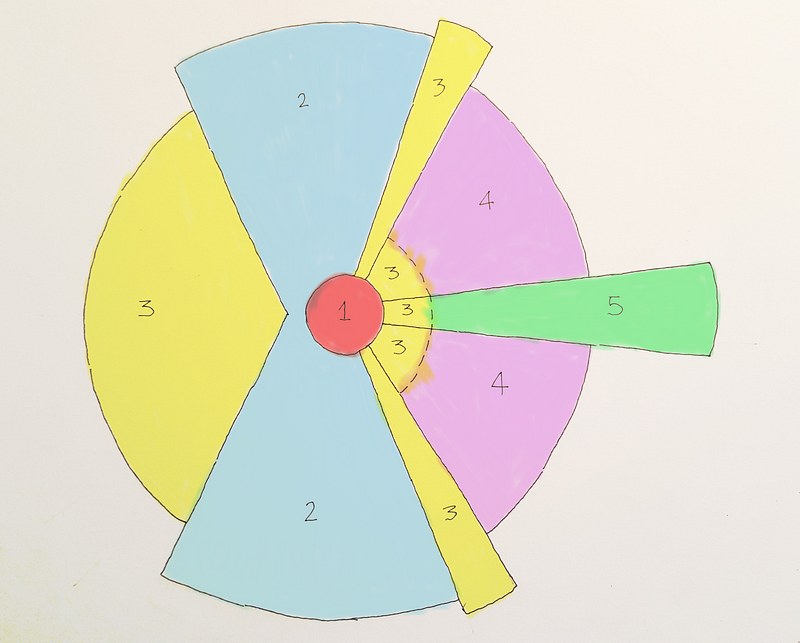
Featured Blog | This community-written post highlights the best of what the game industry has to offer. Read more like it on the Game Developer Blogs or learn how to Submit Your Own Blog Post
Game Cities: Those Handy, Simplified Urban Structures
The basics of urban structure and the three classic city models; a fine way of getting started with imaginary urban planning for your video game cities.


Very few cities are ever built from scratch. What we experience when walking through New York, visiting Beijing, exploring Rome, or living in Athens is not the result of a single planner’s all encompassing thought. On the contrary. Despite all the Haussmanns and Le Corbusiers urban realities are the dynamic outcome of complicated historical-geographical processes, plans upon plans, explosive contradictions, revolutions, progress and reaction, designs and re-designs, competing urbanistic ideas and histories, unexpected functions, layers of architecture, a menagerie of evolving antithetic needs, and a flux of materialized ideas, uses, and problems.
Admittedly, planners, urbanists, architects, and their teams have shaped important aspects and areas of our urban environments, and occasionally deeply influenced the urban process, but never truly created or thoroughly regulated city life and the urban experience as a whole. And yet here are we game crafters trying to simulate the combined effects of centuries and millions of people in order to create the illusion of believable cities with our (comparatively or literally) tiny teams…

Now, I have written several articles trying to help with this incredibly broad and occasionally cumbersome subject, but never one specifically meant to help artists get started with the imagining of their very own virtual urban centers. Apparently this initial step is sometimes both crucial, and what people — including several of my students — tend to find the most intimidating.
So, as I’ve mentioned elsewhere, the very first step should be answering the three main questions regarding imaginary cities: Where, when, and how big. Placing your city in time and space is crucial, as is determining its size. These factors, you see, greatly influence everything from the dominant architectural styles and central urban functions, to the existing topographies and weather patterns, which in turn profoundly influence and are influenced by the economy or local lifestyles.
Unfortunately, answering said three questions, important as it might be, will not help much when actually coming up with an initial map of the whole city.
Even if you do manage to write a few paragraphs (which you should) describing the place, its economy, its people, and its atmosphere, and even if you do commission some truly evocative concept art, creating a city map — or just a quick but meaningful initial sketch — has proved the trickier part. And that’s exactly where approaching the theories on urban structure can really help kick things off. Especially if we avoid the more complex (and admittedly more scientific) contemporary theories, and focus on the simplified models of yore.
What I am actually looking for here is to provide you with working, simple blueprints that can easily be modified and built upon, as well as a simple guiding logic.
Additionally, I will be focusing on the more or less modern city structures, which do in most cases apply to at least a hundred years back, and also to most cyberpunk, and near future sci-fi settings. These are helpfully super simple to understand, envision, and thus use and modify too.
Then again, I do keep mentioning structure, without attempting to explain what urban structure actually is. Well, the important and obvious thing to know is that all settlements come with structure, that structure defines urban form, and that structure itself can be relatively accurately mapped; also, that structure encompasses the crucial and defining urban functions.
If we accept that each and every contemporary city provides and allows for at least some residential, service, and industrial functions, and thus reserves space — land uses — for housing, services, and production, the ways in which these functions are located on the land (on urban space), and in relationship to one another is what we generally call the urban structure.
There are three commonly employed models that are used to describe modern structures to students of urbanism, which will also be the ones I will be presenting here, as they can serve as excellent starting points for the creative process. Mind you, you should never hesitate to introduce anomalies to them, and you should definitely allow a place’s history, and natural geography to shape it.
Ancient cores, existing fortifications, demolished city-walls that have been turned into urban highways, rivers, space-hungry palaces, a new parliament, a surviving cliff, that great fire, etc should all inform your model accordingly, and make it more interesting to explore and play in.
[A disclaimer of sorts: such models do not dictate all aspects of city form, though they do definitely influence it; they do not for example include any data on street patterns, transportation networks, densities, architectural styles, or the degree to which a place has been planned and how.]
So, the first and most well known model — a classic admittedly — is none other than the famous model of Concentric Zones. Here’s what it usually looks like:

In this case, a city core — what Burgess used to call the Loop — sits comfortably in the middle, and is, as the word implies, the core of urban life. Here activity, power, wealth, goods, traffic, services, and even culture are concentrated. It is the area of maximum flow, and most probably the centre of business as it includes the Central Business District (CBD), and what we usually call downtown.
Obviously in an ancient Roman city the core wouldn’t be organized around the CBD but the Forum, whereas a dark cathedral would most suitably form the core of fantasy town, but you do get the general spatial logic of things. More important and older things are located in the middle, where also the crucial functions are gathered in order to be equally accessible by all. Supporting or secondary land uses are arranged around said center.
In the concentric model the core’s influence is maximized, as around it and outwards the rest of the city’s zones are organized. This is most commonly done in deceasing density. Like this:

A more modern update of the same model would expect a wealthy, culturally active inner city to surround the core, and would place manufacturing towards the outer parts of the urban area. It would look a bit like the following sketch with the added admission that only rarely could such rings/zones merely contain a single land use. The northern part of the outer ring, for example, can consist of posh suburbs, whereas the southern could be an industrial zone.

That is why Hoyt’s Sector model is, usually, closer to reality. Here it is:
 Area 1 is the Central Business District, area 2 is a wholesale, light manufacturing area, area 3 is low-class residential, area 4 is middle-class residential, and area 5 is dominated by the homes of the rich.
Area 1 is the Central Business District, area 2 is a wholesale, light manufacturing area, area 3 is low-class residential, area 4 is middle-class residential, and area 5 is dominated by the homes of the rich.
Finally, even more complex, yet also easier to adapt to an uneven and more dramatic topography, is the Multiple Nuclei model, which tends to fit larger cities and the modern metropolis better. It subtly even recognizes the existence and importance of secondary and/or specialized centers.

Here’s what the numbers on the sketch above stand for:
1. CBD
2. Wholesale, Light Manufacturing
3. Low-class Residential
4. Medium-class Residential
5. High-class Residential
6. Heavy Manufacturing
7. Outlying Business District
8. Residential Suburb
9. Industrial Suburb
Now, if you pick one of those three models, and enrich it with considerations regarding such things as the street patterns of streets, the focus of the local economy, and the fact that the longer a city has existed the deeper its historic influences will have been, you should already have something vaguely interesting and modestly convincing on your hands. Or, at the very least, something to guide your research and build upon.
Read more about:
Featured BlogsAbout the Author(s)
You May Also Like







.jpeg?width=700&auto=webp&quality=80&disable=upscale)








